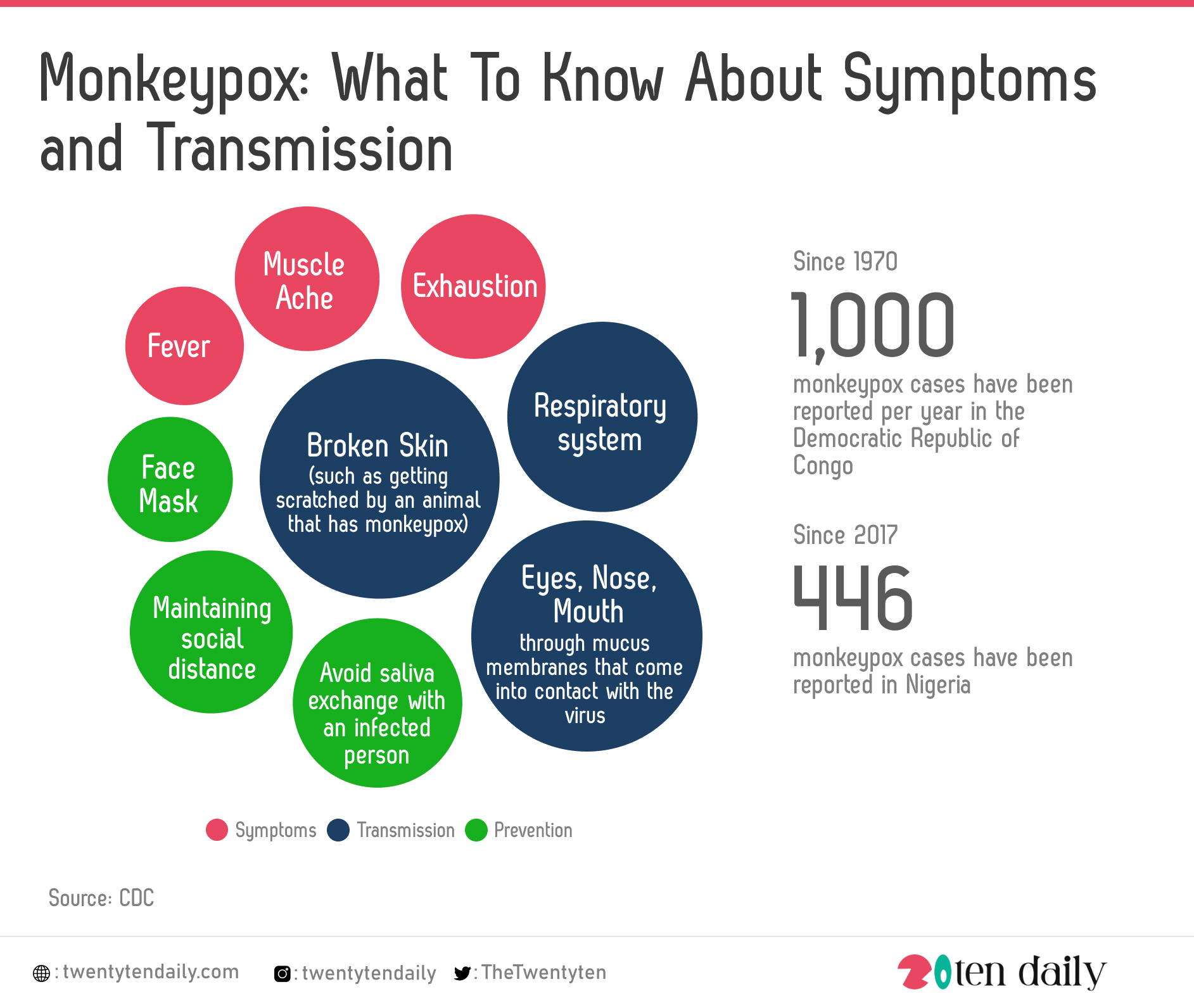Monkeypox: What To Know About Symptoms and Transmission
The Dallas County Department of Health and Human Services in America has confirmed that an unidentified man who recently returned from a trip to Nigeria tested positive for the very rare monkeypox virus. This case is thought to be the first-ever monkeypox case in Texas.
Health officials in America are now frantically searching for other passengers on the same international and domestic flight with the resident upon their return to the country. But what is the urgency for? Just how dangerous is monkeypox, and is there a risk of a wide-scale outbreak?
Here is all that you need to know about the virus, according to the Centers for Disease Control and Prevention (CDC)
What is monkeypox?
Monkeypox is a virus that is genetically related to smallpox and cowpox. The virus was first discovered in lab monkeys in Denmark in 1958. In 1970, the first human case of monkeypox was identified in the Democratic Republic of Congo. Since then, there have been small outbreaks of fewer than a dozen people in some African nations, as well as Western and Asian nations.
While most outbreaks include fewer than a dozen infections, since 1970 there have been around 1,000 monkeypox cases per year in the Democratic Republic of Congo. Nigeria has reported 446 cases of monkeypox since 2017.

Symptoms Of Monkeypox
The CDC has reported that the symptoms which begin between 5 days to 3 weeks include fever, muscle ache, headache, and exhaustion are all common symptoms of smallpox. However, unlike smallpox, with monkeypox, the lymph nodes swell. The patient also develops a rash over their face and body, which then scabs over.
Transmission, Prevention and Cure
Monkeypox is transmitted mainly through broken skin (such as getting scratched by an animal that has monkeypox), through the respiratory system, or through mucus membranes that come into contact with the virus, such as the eyes, mouth, and nose.
One can prevent infection by wearing a face mask, avoid saliva exchange with an infected person, and maintaining social distance. All necessary Personal Protective Equipment (PPE) must also be worn around patients.
There is currently no cure or vaccine for monkeypox. The CDC has confirmed that the virus can kill as many as 1 out of every 10 people it infects.



